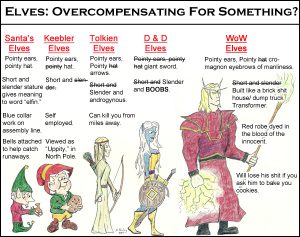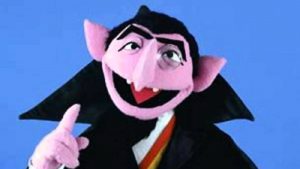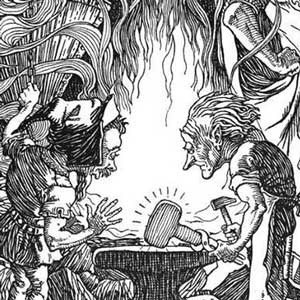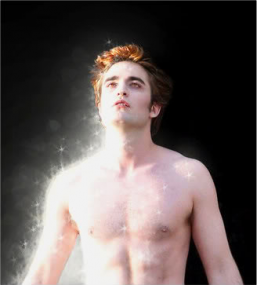Speculative fiction, being that it is purely speculative, is an evolving set of genres. Science fiction and fantasy are generally meant to be fluid and will reflect the times they were made in quite often. And because of this a great many variations will appear within the genre for things that everyone happens to share. What are the differences between Orcs and Orks? How many kinds of vampires are there actually? How distantly related are Legolas and the Keebler Elves?

Sometimes these differences are pretty profound, other times they’re almost non-existent. But what I’ve found most often is that the differences are generally discouraged if a specific work has reached an iconic status. Vampires have had dozens, if not hundreds of variations over the years, but many of the traits which are accepted as “canon” were originated either within Bram Stoker’s Dracula or the movie adaptations to follow. This is strange, because it means the original source material, the folklore, is generally forgotten in favor of variations on a theme of Dracula. It’s because of this that I personally went out of my way to include several variations of vampire in my stories and bring back old bits of lore that are often forgotten – like the fact a vampire can’t cross certain materials without counting every grain in their path.

The funny thing is that, in my world of sci-fantasy reinterpretations of the mythological as biological creatures, I’ve had a few run-ins with people who felt that I had somehow been “wrong” to change the lore. As one person said to me very early on, “I prefer my version”. It’s not the only feedback you get, but it’s one that you realize is quietly prevalent. Though some books and movies get away with it because they’re popular, if something has flaws, it will be immediately criticized for getting the lore “wrong”. Hell, at one point even I took part in doing this before realizing the flaw in my thinking.
Because, after all, cultures that stagnate will never decay… right?
Breaking Down And Building Up

Though often forgiven for more popular works, straying from the most popular depiction is generally a risky endeavor and some people will avoid it whenever possible. Sometimes, this is an active decision, a desire to not confuse or upset the established fan-base. Other times, we stick close to the popular depiction because that’s become how we envision these creatures as well. Elves, for instance, are almost always depicted in a fashion resembling those from Tolkien’s works (dwarves too). Examples like Terry Brooks’ Shannara Chronicles even keep fairly close to a Tolkien-esque depiction of elves when all of the other creatures in the lore happen to be human mutations in a post-apocalyptic world. And when they stray much further than that there’s usually a mixed reaction from fans. Why is it we dovetail to this so often? Well, because we forget Tolkien was borrowing these ideas too.

It feels a bit like blasphemy to say, considering how iconic the world of Middle Earth is to the fantasy genre today, but Tolkien was deriving his work from older sources just like the rest of us. He was, though skilled at crafting a vibrant world, drawing on cultures and histories that existed long before he put pen to paper. The creatures of his world, for all their history and detailed cultures, were based in European mythologies such as Norse, Celtic, and the rest of the Germanic family. Tolkien didn’t invent elves, dwarves, or ogres – he gave his own interpretation of them and did a damn good job at making us care about that interpretation. So to treat it as the original source material, as fans are often prone to do, can at times erase some of the details that once existed in the old lore.
The same has happened for vampires, as mentioned before, and I will admit to having taken part in this at one time. Though the Twilight series of books and films are not exactly my cup of tea, and I wouldn’t recommend them to anyone, the backlash over the definition of “true vampires” is something I realized later was misguided at best. Yes, strange as Meyer’s sparkling vampires may be, they have just as much a right to exist as any other version of vampires to come to pass. And the fact is, many things you consider absolute of vampiric lore just wasn’t there originally. Sunlight, while generally dangerous to the undead, didn’t actually impact the vampires of European folklore – they were simply nocturnal. As a result, though many of us dog-piled on the sparkling, it wasn’t necessarily “wrong”.

So it’s something worth keeping in mind. Though I rarely hear it directed my way as I blatantly rewrite creatures to fit my world, the few times I have are just a faint echo of the more severe backlash others have faced. We shouldn’t feel compelled to use what has already come before just because that’s become the tradition. What we do as speculative fiction writers rather than reusing preexisting lore is essentially recycling it. We break it down to its basic parts, reconfigure them into a new form, and use the material in a way that it hadn’t been used before. Like a stack of newspapers being recycled into fresh sheets of paper or a new stack of cups, we take the fundamental materials and put it into a shape which is different but no worse. It’s not necessarily destroying the underlying material, just deconstructing the form it had been shaped into so we can give it new life.
And it’s not that I sit here arguing we should simply abolish the most popular depiction – I’m a fan too. But what I’ve come to realize is that we should encourage people to not just cling to that depiction for the sake of it. There is more available in the lore, in the world at large, than what we’ve seen in the single depiction that instantly springs to mind. If every story were the same there’d be no point in writing them anymore. We’re supposed to give our own twists on it, and those twists don’t have to stem from the exact same origin every time. If someone wishes to do a version of Vampires that sparkles, so be it. If someone prefers to make Elves that are more trickster and less noble ancient race, have at it. If someone decides to make Werewolves a less savage creature who can trigger their transformation at will…
Well, it’s worked before.
(I write novels, dabble at screenplays, and flail around on twitter. Those tweets often feature my rewrites of many creatures of lore. Most people enjoy it, and others have done their best to correct me.)







